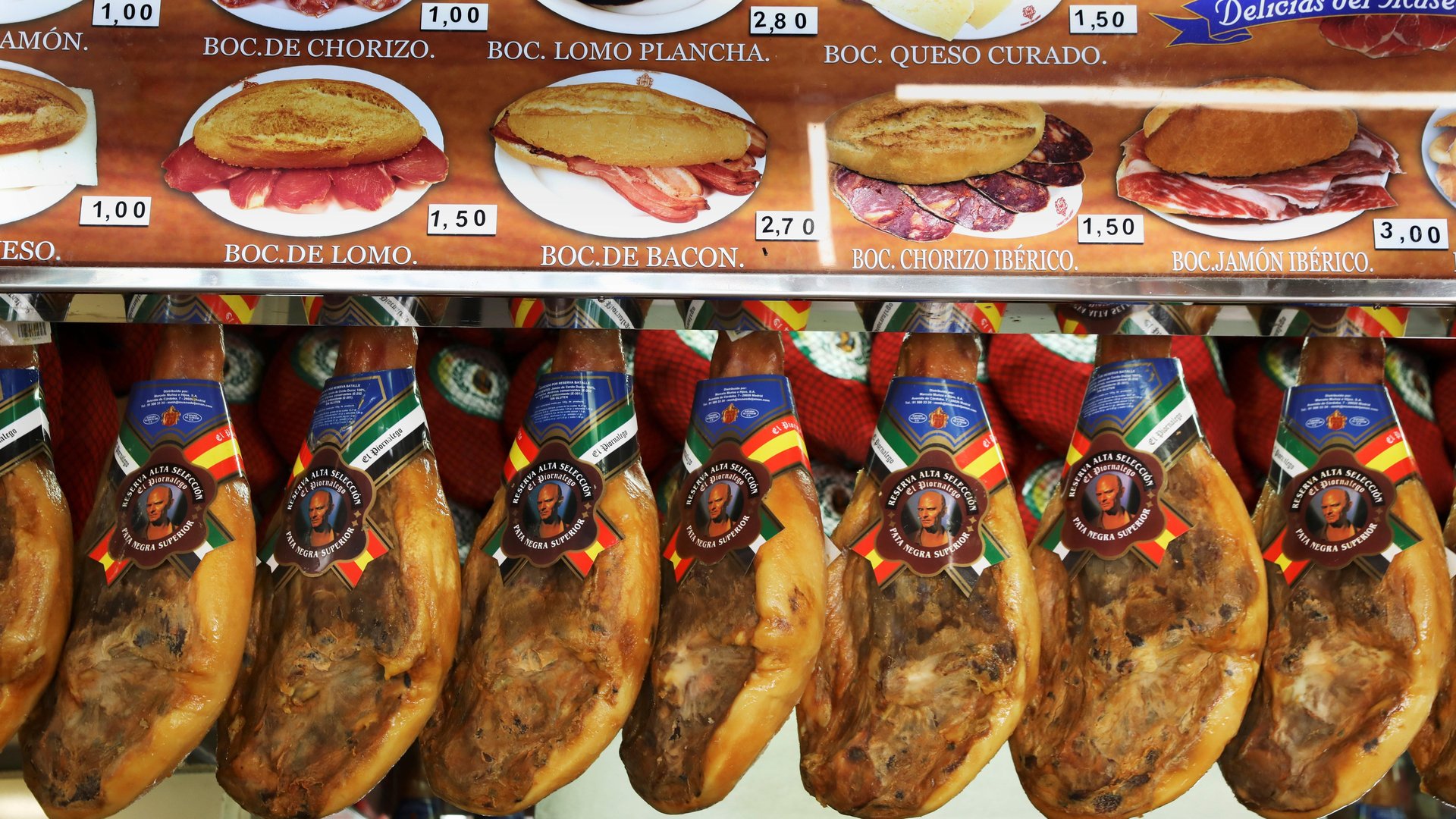How Spain became Europe's largest pork producer
Some Spaniards think there are too many pigs in their country

Spanish villages were promised that pork production would revitalize Spain’s rural communities, but it hasn’t turned out that way for some areas like Balsa de Ves. Spain’s rural population continues to decline, and now the growing number of pigs is linked to water contamination in some areas.
Suggested Reading
The growing consumption of pork, both domestically and internationally, has transformed certain regions across rural Spain, but the impact has not necessarily been positive, according to a recent report by the Guardian. Though half of Spain’s pork industry is located in rural areas, in the past decade, 90% of Spanish villages with fewer than 1,000 inhabitants have seen their populations shrink. To boost livelihoods and to stop people from leaving, Balsa de Ves turned to the pig farming business after an industry representative showed up at a council meeting in 2006, Balsa de Ves’s mayor Natividad Pérez García told the Guardian.
Related Content
Not surprisingly, the investment in this industry would lead to residents reporting new, unpleasant smells, a constant stream of trucks upturning the roads, and the drinking water supply affected by the presence of nitrates linked to the spread of manure.
The global production of pork for consumption has increased from 118 British tonnes in 2021 to 121 tonnes last year, according to data from Organization for Economic Cooperation and Development (OECD). Spain is No. 3 in pork production in the world, according to 2021 data from the Spanish government, behind China and the US. And Spain is the largest pork producer in the EU, with Germany coming in second.
The changes come as global pork consumption remains strong. In 2021, pig slaughtering was up 40% for Spain from a decade earlier.
Most of Spain’s pork production is concentrated in three regions, Catalonia, Aragon, and Castile and Leon.
So, how did Spain’s domination of the pork industry come about?
The roots of Spain’s pork production domination
Part of the growth started when Spain became a member of the European Union in 1986. That spurred a relocation of EU pig operations, which favored lower labor and feed costs, lower population density, and looser environmental regulations. To stay competitive with their European counterparts, Spain’s pig producers invested in technology for greater efficiency and flexibility.
Domestic demand also boomed. Between 1985 and 2002, annual per capita pork consumption in Spain almost doubled, which can largely be attributed to the substantial increase in per capita income experienced by Spain after it joined the EU. Spaniards have a particular penchant for cured ham, which is a relatively expensive item compared to other pork products, suggesting that incomes were increasing.
Fast forward two decades, when the pandemic hit, Spain was able to overcome disruptions due to increased pandemic-related restrictions globally and slaughterhouses worked at a normal capacity to satisfy domestic and export demand, according to an October 2021 US Department of Agriculture report—a contrast to the meat facilities in the US. In 2020, total swine slaughtered in Spain rose 6% compared to 2019, according to Spanish official data.
Swine flu fever changed pork trade routes
The swine flu outbreak in China propelled Spain to become a bigger player in the global pork market. The outbreak swept through China starting in 2018, pushing the country to depend on imported pork from Spain. More recently, outbreaks in parts of Europe, such as Germany—the second-largest pork producer in the EU—in September 2020, gave Spain more access to China’s lucrative market. To date, about half of Spain’s pork production is exported, with China as the biggest destination.
But there are signs the demand for Spain’s pork could change. Since July 2021, pork demand from China has been falling, with USDA researchers expecting the decline to continue.